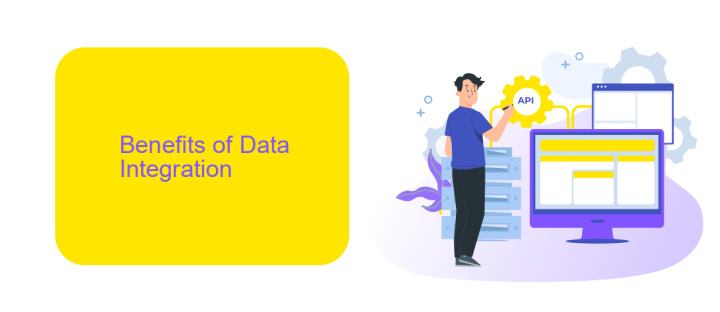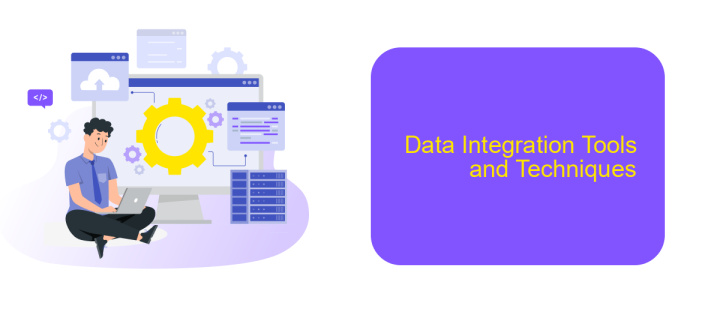Data Integration Means
Data integration is a critical process in today's data-driven world, enabling the seamless combination of information from various sources into a unified view. This practice enhances data accessibility, consistency, and quality, facilitating better decision-making and operational efficiency. In this article, we will explore the importance, methods, and benefits of data integration, shedding light on how it supports modern business intelligence and analytics.
Introduction
Data integration is a crucial process for organizations aiming to consolidate information from multiple sources into a cohesive and actionable format. This practice not only enhances data accessibility but also ensures consistency and accuracy across various platforms. By integrating data, businesses can make more informed decisions, improve operational efficiency, and gain a competitive edge in the market.
- Improved data quality and consistency
- Enhanced decision-making capabilities
- Streamlined operations and processes
- Increased agility and responsiveness
One of the effective tools for data integration is ApiX-Drive, a service that automates the process of connecting different applications and platforms. ApiX-Drive simplifies data synchronization, reduces manual effort, and ensures real-time data flow between systems. By leveraging such services, organizations can focus on strategic initiatives while maintaining seamless data integration across their technological landscape.
Benefits of Data Integration

Integrating data from multiple sources offers numerous benefits, enhancing both operational efficiency and strategic decision-making. One of the primary advantages is improved data accuracy and consistency. By consolidating data into a single repository, organizations can eliminate discrepancies and reduce the risk of errors, ensuring that all departments are working with the same, up-to-date information. This unified approach streamlines processes and fosters better coordination across various business functions.
Another significant benefit is the ability to gain deeper insights through comprehensive data analysis. Data integration enables businesses to combine diverse datasets, revealing patterns and trends that might be missed when data is siloed. Tools like ApiX-Drive facilitate seamless integration by automating the transfer and synchronization of data between different platforms, saving time and reducing manual effort. This not only enhances productivity but also empowers organizations to make more informed decisions, ultimately driving growth and innovation.
Challenges of Data Integration

Data integration presents several challenges that organizations must overcome to ensure seamless and efficient operations. These challenges can significantly impact the quality, reliability, and accessibility of integrated data.
- Data Quality and Consistency: Ensuring that data from different sources is accurate, complete, and consistent can be difficult, as discrepancies and errors may arise.
- Data Security and Compliance: Integrating data across various systems requires robust security measures to protect sensitive information and comply with regulatory standards.
- Scalability: As organizations grow, their data integration solutions must scale accordingly, which can be challenging without the right infrastructure and tools.
- Complexity of Integration: Integrating disparate systems with different data formats and protocols can be technically complex and time-consuming.
- Real-time Data Processing: Ensuring real-time data synchronization and processing is crucial for timely decision-making but can be challenging to implement effectively.
To address these challenges, tools like ApiX-Drive offer automated data integration solutions that simplify the process. ApiX-Drive enables seamless connection between various applications, ensuring data consistency, security, and scalability. By leveraging such tools, organizations can mitigate the complexities of data integration and enhance their operational efficiency.
Data Integration Tools and Techniques

Data integration tools and techniques are essential for combining data from various sources into a unified view. These tools help organizations streamline processes, improve data accuracy, and enable better decision-making by ensuring that data is consistent and up-to-date across all systems.
One popular approach to data integration is the use of middleware, which acts as a bridge between different systems, allowing them to communicate effectively. Additionally, ETL (Extract, Transform, Load) processes are commonly used to extract data from various sources, transform it into a suitable format, and load it into a target system.
- ETL (Extract, Transform, Load) Tools
- Middleware Solutions
- API Management Platforms
- Data Virtualization Tools
- Cloud-based Integration Services
For instance, ApiX-Drive is a robust cloud-based integration service that simplifies the process of connecting different applications and automating workflows. It provides a user-friendly interface and supports numerous integrations, making it an excellent choice for businesses looking to enhance their data integration efforts.


Conclusion
In conclusion, data integration is a crucial aspect for modern businesses aiming to streamline operations and enhance decision-making processes. By merging data from various sources, organizations can achieve a unified view, leading to more accurate analytics and better strategic insights. The complexities involved in data integration, such as dealing with diverse data formats and ensuring data quality, necessitate robust solutions and meticulous planning.
Tools and services like ApiX-Drive play a pivotal role in simplifying the data integration process. ApiX-Drive enables seamless connection between different applications and services, automating data transfer and synchronization. This not only reduces manual effort but also minimizes the risk of errors, ensuring that businesses can focus on leveraging their integrated data to drive growth and innovation. As the landscape of data continues to evolve, the importance of effective data integration becomes ever more critical, making it an indispensable component of any data strategy.
FAQ
What is data integration?
Why is data integration important?
What are some common challenges in data integration?
How can automation help in data integration?
What are the benefits of using a platform like ApiX-Drive for data integration?
Time is the most valuable resource for business today. Almost half of it is wasted on routine tasks. Your employees are constantly forced to perform monotonous tasks that are difficult to classify as important and specialized. You can leave everything as it is by hiring additional employees, or you can automate most of the business processes using the ApiX-Drive online connector to get rid of unnecessary time and money expenses once and for all. The choice is yours!

